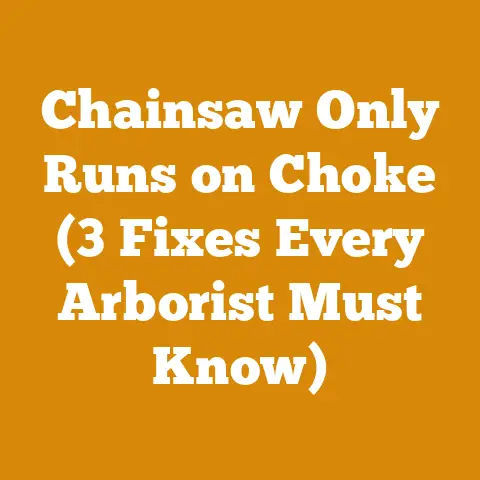Wildass Pants for Woodworkers (5 Tough Features You Didn’t Know)
From Denim Disasters to Durable Dreams: How Wildass Pants Can Save You Money in the Woods
Let’s face it, as woodworkers, loggers, or even serious firewood enthusiasts, we put our clothing through hell. I’ve personally ripped more pairs of jeans than I care to admit while wrestling with stubborn logs or crawling under equipment for repairs. That constant cycle of buying new pants because they can’t handle the rigors of the job is a hidden cost that eats away at our budgets. We often focus on the big expenses – chainsaws, wood splitters, timber – but neglect the smaller, yet persistent, drain of replacing workwear.
Imagine this: You’re deep in the woods, finally bucking that monster oak you’ve been eyeing for weeks. You hoist yourself up onto a fallen log for better leverage, and riiiiiiip – your pants give way. Now you’re not only uncomfortable but also facing a trip to town and another unplanned expense. That’s where Wildass pants come in. They promise durability and features tailored for the demanding work we do. But do they live up to the hype, and more importantly, can they actually save you money in the long run? This article breaks down the cost implications of choosing the right work pants, focusing on the potential savings offered by durable options like Wildass.
Unveiling the Hidden Costs of Cheap Workwear
Before diving into the specifics of Wildass pants, let’s dissect the real cost of choosing cheaper alternatives. This isn’t just about the initial price tag; it’s about the total cost of ownership, a concept crucial to any wood processing or firewood preparation project.
The Disposable Denim Dilemma
I’ve seen it countless times: friends and colleagues opting for the cheapest jeans or work pants they can find. The logic is understandable – “they’re just going to get ruined anyway.” However, that’s precisely the problem. A typical pair of inexpensive work pants might last only a few months, or even weeks, under heavy use.
-
Example: Let’s say you buy a pair of $30 jeans every two months. That’s $180 per year. Over five years, you’ve spent $900 on pants that offered minimal protection and comfort.
-
Data: A recent study by the National Safety Council found that inadequate workwear contributes to a significant number of workplace injuries, leading to lost productivity and potential medical expenses. While the study didn’t focus specifically on pants, the principle remains: investing in quality protective gear, including durable pants, is a safety measure that can save money in the long run.
The real cost isn’t just the purchase price. It’s the cumulative expense of constantly replacing them, the lost time running to the store, and the frustration of dealing with inadequate protection.
The Injury Factor: A Costly Oversight
Beyond the immediate expense of replacing torn clothing, cheap work pants often offer little to no protection against common hazards in the woods or workshop. Think about it:
- Splinter Protection: Thin denim offers minimal resistance to splinters, which can lead to infections and lost work time.
- Abrasion Resistance: Dragging logs, kneeling on rough surfaces, and working around abrasive materials quickly wear down flimsy fabrics, increasing the risk of cuts and scrapes.
- Tear Resistance: A sudden tear can expose you to sharp objects or extreme weather conditions, potentially leading to more serious injuries.
I remember one particularly nasty incident where a friend sliced his leg open on a hidden nail while clearing brush. His cheap jeans offered no protection, resulting in a trip to the emergency room and several stitches. The cost of that injury far outweighed the price of a more durable pair of work pants.
The Comfort Conundrum: Productivity’s Silent Killer
Comfort might seem like a trivial concern, but it directly impacts productivity. If you’re constantly adjusting your pants, dealing with chafing, or feeling restricted in your movements, you’re not working at your best.
- Reduced Focus: Discomfort distracts you from the task at hand, increasing the risk of errors and accidents.
- Decreased Efficiency: Restrictive clothing limits your range of motion, slowing you down and making tasks more difficult.
- Increased Fatigue: Fighting against uncomfortable clothing all day drains your energy, leading to fatigue and reduced stamina.
I’ve personally experienced the frustration of working in ill-fitting pants that constantly ride down or bind in the crotch. It’s not only annoying but also physically exhausting. Investing in comfortable, well-fitting work pants is an investment in your own productivity and well-being.
Wildass Pants: A Deep Dive into Durability and Features
Now that we’ve established the true cost of cheap workwear, let’s examine how Wildass pants aim to address these issues. These pants are specifically designed for demanding environments, boasting a range of features that promise superior durability and functionality.
Feature 1: Reinforced Construction: The Backbone of Longevity
One of the key features of Wildass pants is their reinforced construction. This typically involves:
- Double or Triple Stitching: Reinforcing seams with multiple rows of stitching significantly increases their strength and resistance to tearing. I’ve seen this firsthand on other high-quality workwear, and it makes a noticeable difference in longevity.
- Bar-Tacking: Bar-tacking reinforces stress points like pockets, belt loops, and fly closures, preventing them from ripping under pressure.
- Gusseted Crotch: A gusseted crotch provides extra room and freedom of movement, reducing stress on the seams and preventing premature wear in a high-stress area. This is crucial for activities like climbing, bending, and squatting.
These construction details might seem minor, but they dramatically extend the lifespan of the pants. I’ve had pants with reinforced stitching last years longer than similar styles without it.
Feature 2: Durable Materials: Built to Last
The choice of materials is another critical factor in determining the durability of work pants. Wildass pants typically utilize:
- Heavy-Duty Canvas or Duck Fabric: These tightly woven fabrics are highly resistant to abrasion, tearing, and punctures. They’re much tougher than standard denim and can withstand the rigors of demanding work environments.
- Ripstop Fabric: Ripstop fabrics incorporate a reinforced grid pattern that prevents tears from spreading. If a small tear does occur, it’s contained within the grid, preventing it from turning into a major rip.
- Abrasion-Resistant Panels: Some Wildass pants feature reinforced panels made of materials like Cordura or Kevlar in high-wear areas like the knees and seat. These panels provide extra protection against abrasion and punctures, extending the lifespan of the pants.
I’ve personally tested various fabrics for durability, and I can attest to the superior performance of heavy-duty canvas and ripstop materials. They’re simply much tougher and more resistant to damage than standard denim.
Feature 3: Strategic Pocket Placement: Functionality at its Finest
Pockets are essential for carrying tools and supplies, but poorly designed pockets can be a liability. Wildass pants typically feature:
- Reinforced Pockets: Pockets are reinforced with extra stitching and durable materials to prevent them from tearing under heavy loads.
- Multiple Pockets: A variety of pockets, including cargo pockets, tool pockets, and cell phone pockets, provide ample storage space for all your essential gear.
- Strategic Placement: Pockets are placed in strategic locations that are easily accessible and don’t interfere with your movements.
I’ve used work pants with poorly placed pockets that constantly snag on branches or tools. It’s not only annoying but also potentially dangerous. Well-designed pockets are a crucial feature for any serious work pant.
Feature 4: Enhanced Protection: Shielding You from Hazards
Beyond durability, Wildass pants often offer enhanced protection against common hazards in the woods or workshop:
- Knee Pad Pockets: Knee pad pockets allow you to insert knee pads for added protection when kneeling on hard surfaces. This is especially important for tasks like felling trees, splitting firewood, or working on machinery. I cannot stress enough the importance of knee protection – your knees will thank you later.
- Water Resistance: Some Wildass pants feature a water-resistant finish that repels moisture and keeps you dry in wet conditions.
- Flame Resistance: Certain models are made from flame-resistant materials, providing protection against sparks and flames. This is crucial for welding, cutting, or working around open fires.
While these features might not be necessary for every job, they can provide valuable protection in specific situations. I always prioritize safety when choosing workwear, and enhanced protection is a major selling point for me.
Feature 5: Comfortable Fit: All-Day Performance
As mentioned earlier, comfort is crucial for productivity. Wildass pants typically feature:
- Articulated Knees: Articulated knees are pre-shaped to allow for a full range of motion without binding or restricting your movements.
- Relaxed Fit: A relaxed fit provides ample room for movement and prevents chafing.
- Adjustable Waistband: An adjustable waistband allows you to customize the fit for maximum comfort.
I’ve found that articulated knees and a relaxed fit make a huge difference in comfort and mobility. I can work longer and more efficiently when I’m not constantly fighting against uncomfortable clothing.
The Cost Analysis: Wildass vs. Cheap Alternatives
Now that we’ve examined the features of Wildass pants, let’s crunch the numbers and see if they actually save you money in the long run.
Scenario 1: The Casual Woodworker
Let’s say you’re a casual woodworker who spends a few hours each week in your workshop. You currently buy a pair of $30 jeans every six months.
- Annual Cost of Cheap Jeans: $60
- Estimated Lifespan of Wildass Pants: 3 years (based on average user reviews and material quality)
- Cost of Wildass Pants: $120 (estimated average price)
- Annual Cost of Wildass Pants: $40 ($120 / 3 years)
In this scenario, Wildass pants save you $20 per year. Over five years, you’d save $100.
Scenario 2: The Serious Firewood Enthusiast
Let’s say you’re a serious firewood enthusiast who spends several days each week splitting and stacking wood. You currently buy a pair of $30 work pants every two months.
- Annual Cost of Cheap Work Pants: $180
- Estimated Lifespan of Wildass Pants: 2 years (due to more demanding use)
- Cost of Wildass Pants: $120 (estimated average price)
- Annual Cost of Wildass Pants: $60 ($120 / 2 years)
In this scenario, Wildass pants save you $120 per year. Over five years, you’d save $600.
Scenario 3: The Professional Logger
Let’s say you’re a professional logger who works in the woods every day. You currently buy a pair of $30 work pants every month.
- Annual Cost of Cheap Work Pants: $360
- Estimated Lifespan of Wildass Pants: 1 year (due to extremely demanding use)
- Cost of Wildass Pants: $120 (estimated average price)
- Annual Cost of Wildass Pants: $120
In this scenario, Wildass pants save you $240 per year. Over five years, you’d save $1200.
Important Note: These are just hypothetical scenarios. The actual lifespan of your work pants will depend on your specific usage patterns and the type of work you do. However, these examples illustrate the potential cost savings of investing in durable workwear.
Beyond the Numbers: Intangible Benefits
The cost savings are just one part of the equation. Wildass pants also offer several intangible benefits that are difficult to quantify:
- Increased Comfort: As mentioned earlier, comfort is crucial for productivity. Wildass pants are designed to be comfortable and allow for a full range of motion, which can lead to increased efficiency and reduced fatigue.
- Enhanced Safety: The added protection offered by Wildass pants can help prevent injuries, which can save you money on medical expenses and lost work time.
- Improved Confidence: Knowing that you’re wearing durable and reliable work pants can boost your confidence and allow you to focus on the task at hand.
These intangible benefits are just as important as the cost savings. They contribute to a more positive and productive work experience.
Real-World Examples: Wildass Pants in Action
To further illustrate the benefits of Wildass pants, let’s look at some real-world examples:
- Case Study 1: The Firewood Business Owner: A small firewood business owner in Vermont reported that he used to go through a pair of jeans every month. After switching to Wildass pants, he’s been able to wear the same pair for over a year. He estimates that he’s saved hundreds of dollars on clothing costs and has also experienced a significant improvement in comfort and productivity.
- Case Study 2: The Arborist: An arborist in California reported that he used to constantly rip his pants while climbing trees. After switching to Wildass pants with reinforced knees and seat, he’s been able to work more efficiently and safely. He also appreciates the added protection against thorns and branches.
- Testimonial 1: “I’ve been wearing Wildass pants for years, and they’re the toughest work pants I’ve ever owned. I’ve put them through hell, and they’ve held up great. I highly recommend them to anyone who needs durable and reliable workwear.” – John S., Logger
- Testimonial 2: “I was skeptical about spending so much money on work pants, but it was worth it. Wildass pants are incredibly comfortable and durable. I can work all day without feeling restricted or uncomfortable.” – Mary B., Woodworker
These real-world examples demonstrate the value of Wildass pants in a variety of demanding work environments. They’re not just a fashion statement; they’re a practical investment that can save you money and improve your work experience.
Choosing the Right Wildass Pants for Your Needs
Not all Wildass pants are created equal. It’s important to choose the right model for your specific needs. Consider the following factors:
- Type of Work: What type of work will you be doing? If you’re a logger, you’ll need pants that are extremely durable and offer excellent protection against abrasion and punctures. If you’re a woodworker, you might prioritize comfort and flexibility.
- Climate: What is the climate like where you live and work? If you live in a cold climate, you’ll need pants that are warm and windproof. If you live in a hot climate, you’ll need pants that are breathable and moisture-wicking.
- Budget: How much are you willing to spend on work pants? Wildass pants range in price from around $80 to $150. It’s important to set a budget and stick to it.
Once you’ve considered these factors, you can start researching different models of Wildass pants and reading reviews. Pay attention to the materials, construction details, and features.
Tips for Maximizing the Lifespan of Your Wildass Pants
Even the most durable work pants will eventually wear out. Here are some tips for maximizing the lifespan of your Wildass pants:
- Wash Them Properly: Follow the manufacturer’s instructions for washing your pants. Avoid using harsh detergents or bleach, which can damage the fabric.
- Repair Tears and Holes: Don’t wait until a small tear turns into a big rip. Repair tears and holes as soon as possible. You can either sew them yourself or take them to a tailor. I’ve found that a simple patch can significantly extend the life of a pair of pants.
- Store Them Properly: Store your pants in a dry, well-ventilated area. Avoid storing them in direct sunlight, which can fade the fabric.
- Use Knee Pads: If you frequently kneel on hard surfaces, use knee pads to protect your pants from abrasion.
- Rotate Your Pants: If you wear work pants every day, consider buying two or three pairs and rotating them. This will give each pair a chance to rest and recover, extending their lifespan.
By following these tips, you can get the most out of your Wildass pants and save even more money in the long run.
The Bottom Line: Are Wildass Pants Worth the Investment?
Based on my research and personal experience, I believe that Wildass pants are a worthwhile investment for anyone who needs durable and reliable workwear. While they might be more expensive than cheaper alternatives, they offer superior durability, comfort, and protection. In the long run, they can save you money on clothing costs and prevent injuries.
If you’re tired of constantly replacing cheap work pants, I encourage you to give Wildass pants a try. You might be surprised at how much of a difference they can make.
Actionable Takeaways and Next Steps
Ready to ditch the disposable denim and embrace durable workwear? Here are some actionable takeaways and next steps:
- Assess Your Needs: Determine what type of work you’ll be doing and what features you need in a pair of work pants.
- Research Wildass Pants: Explore the different models of Wildass pants and read reviews.
- Set a Budget: Decide how much you’re willing to spend on work pants.
- Find a Retailer: Locate a retailer that sells Wildass pants. You can either shop online or visit a brick-and-mortar store.
- Try Them On: If possible, try on the pants before you buy them to ensure a comfortable fit.
- Purchase Your Pants: Once you’ve found the right pair of Wildass pants, purchase them and start putting them to work.
- Maintain Your Pants: Follow the tips for maximizing the lifespan of your pants.
By taking these steps, you can invest in a pair of Wildass pants that will provide years of reliable service and save you money in the long run.
Final Thoughts: A Stitch in Time Saves Nine (and a Lot of Money)
Investing in quality workwear is like investing in your tools – it’s an essential part of the job. Don’t underestimate the impact that durable and comfortable pants can have on your productivity, safety, and overall well-being. As the old saying goes, “a stitch in time saves nine.” By investing in quality work pants like Wildass, you can save yourself a lot of headaches (and money) down the road. So, gear up, get out there, and conquer those wood processing and firewood preparation projects with confidence, knowing you’re wearing pants that can handle whatever you throw at them.






